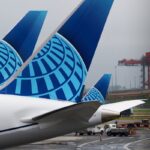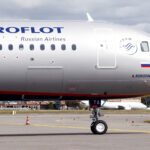The Federal Aviation Administration (FAA) had for a while been raising concerns over how new, full-speed fifth-generation (5G) cell phone services near airports could interfere with aircraft operation and put the airplanes at risk.
Many 5G devices companies including AT&T and Verizon have in their submissions countered that claim but a Professor of Information Sciences and Technology, Penn State, Prasenjit Mitra in an article first published in The Conversation appears to have aligned with FAA’s claim.
AT&T and Verizon though disagreeing with FAA’s assertion both agreed to hold off on installing their new cell phone antennas near airports for six months but it appears the controversy is not abating soon.
The controversy began with the United States government auctioning part of the C-band spectrum to wireless carriers in 2021 for US$81 billion, with the carriers using the C-band spectrum to provide 5G service at full speed, 10 times faster than the speed of 4G networks.
Prasenjit Mitra while sharing FAA’s viewpoint analyzed what can be the problem with the 5G networks when he said below:
“Wireless signals are carried by radio waves. The radio spectrum ranges from 3 hertz to 3,000 gigahertz and is part of the electromagnetic spectrum. The portion of the radio spectrum that carries the signals from your phone and other wireless devices is 20 kilohertz to 300 gigahertz”
“If two wireless signals in the same area use the same frequency, you get garbled noise. You hear this when you are midway between two radio stations using the same or similar frequency bands to send their information. The signals get garbled and sometimes you hear one station, at other times the other, all mixed with a healthy dose of noise.
“Therefore, in the U.S., the use of these frequency bands is tightly regulated by the Federal Communications Commission to ensure that radio stations, wireless carriers, and other organizations are assigned “lanes,” or frequency spectra, to use in an orderly fashion”
He further when on to point out how the altimeters used by modern airplanes to calculate the time for a signal to bounce back from the ground in order to know a plane’s attitude are very vital in automatic landing systems that are especially useful in cases where there is low visibility.

The radio altimeter in an aircraft tells the pilot how far off the ground the aircraft is. Credit: Prasenjit Mitra
According to Prasenjit, if an altimeter interprets a signal from a wireless carrier as the rebounded signal from the ground, it may wrongly presume that the ground is closer than it is and prematurely try to lower the landing gear and do the other maneuvers that are needed to land an aircraft.
He continued: “If interference with wireless carrier signals corrupts and garbles the altimeter’s radio signals, the altimeter may not recognize the rebounded signal and thus be unable to figure out how close to the ground the plane is”.
He further noted that the portions of the radio frequency spectrum used by airplanes and cellphone carriers are different, with the problem being that the airplane altimeters use the 4.2 to 4.4 gigahertz range, while the recently sold – and previously unused – C-band spectrum for wireless carriers ranges from 3.7 to 3.98 gigahertz. “It turns out the 0.22 gigahertz difference between the signals may not be quite enough to be absolutely sure that a cell phone carrier signal will not be mistaken for or corrupt an altimeter’s signal”, he wrote.
The IT Professor though gave a grey of hope as he posited that for the altimeters to function correctly, the stray signals can be registered as noise, while being filtered out, but noted that upgrading aircraft altimeters is expensive.
Prasenjit advised aviation professionals and telecom networks to come to an understanding and to ‘steer clear of trouble for now’, while noting that the chances of such interference are very small but warned that there isn’t much data to say that such interference will never happen.
“Whether there will be interference depends on the receivers in the altimeters and their sensitivity. In my view, there is no way to ensure that such stray interfering signals will never reach altimeters.”, he submitted.

Full-speed 5G signals like those in services that wireless carriers are currently rolling out might interfere with aircraft altimeters. Credit: Prasenjit Mitra
AT&T and Verizon after agreeing to not put up 5G transmitters and receivers near the 50 largest airports for six months earlier in the year rejected another demand from FAA that they postpone the 5G Rollout.
The two companies Chief Executives in the letter sent to the regulators asserted that they would carry on with their 5G services, with the Financial Times reporting that the telecom operators will “adopt so-called exclusion zones around airports, similar to specifications in place in France”.
Discover more from TechBooky
Subscribe to get the latest posts sent to your email.







